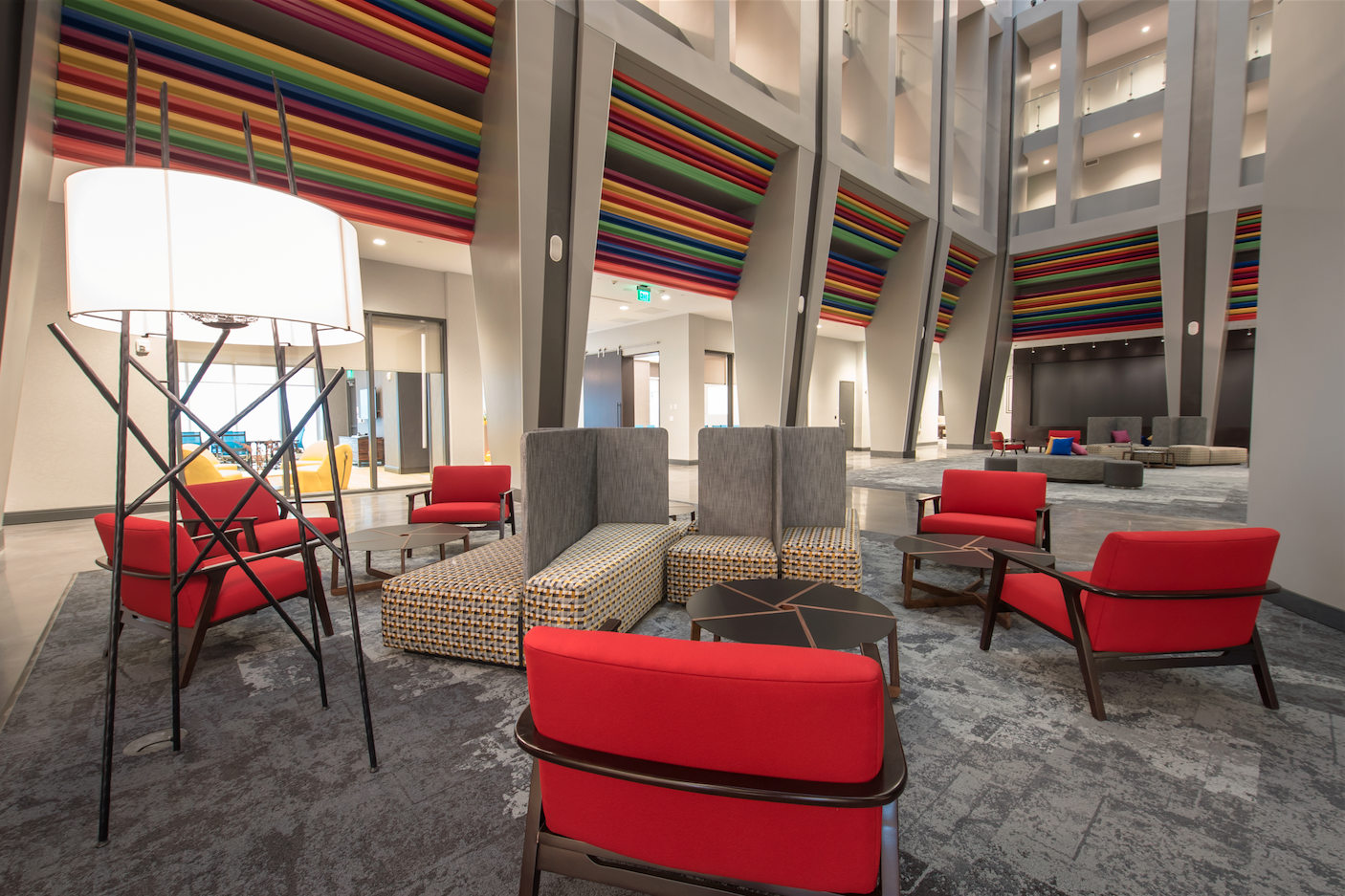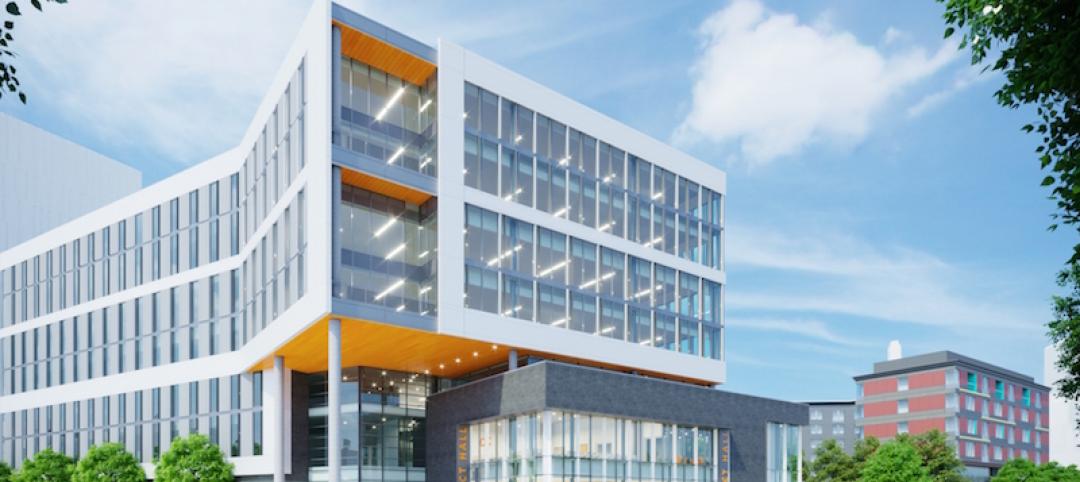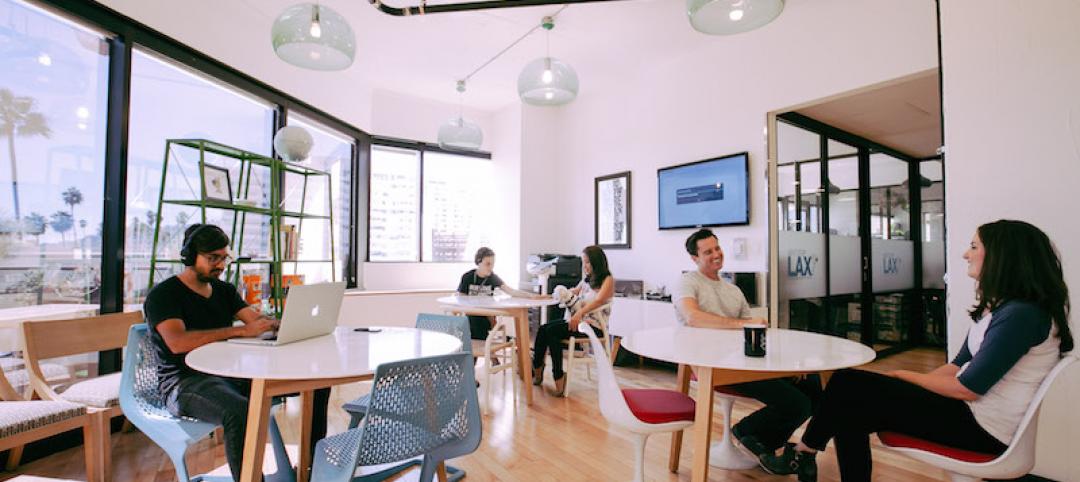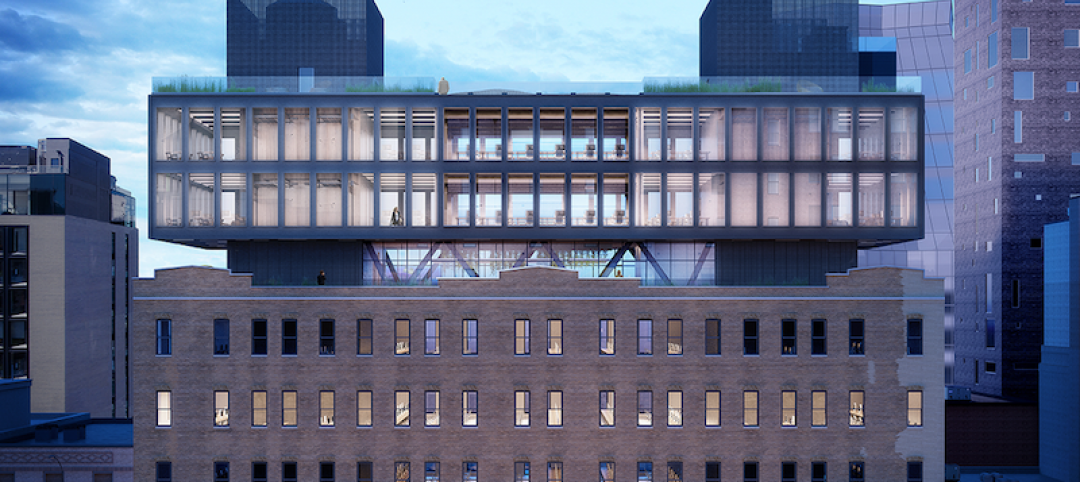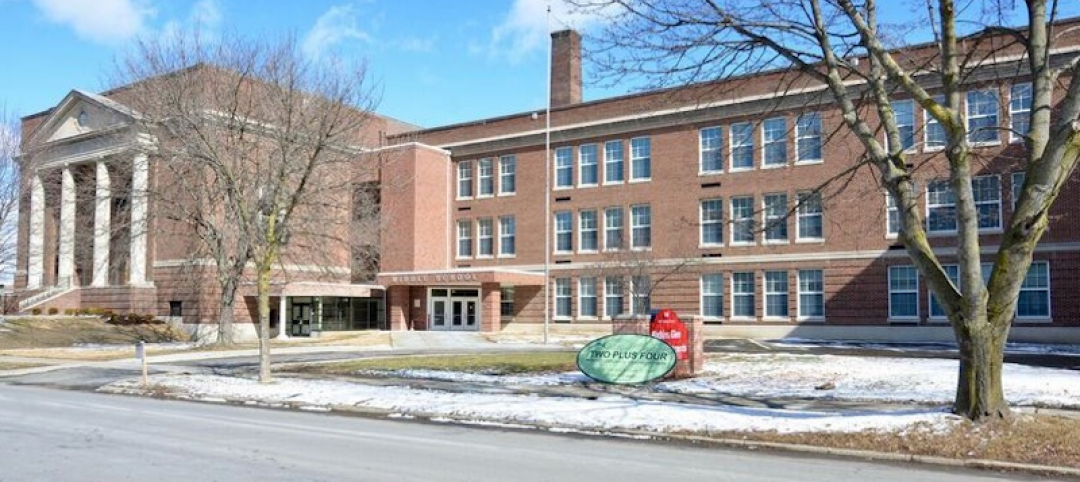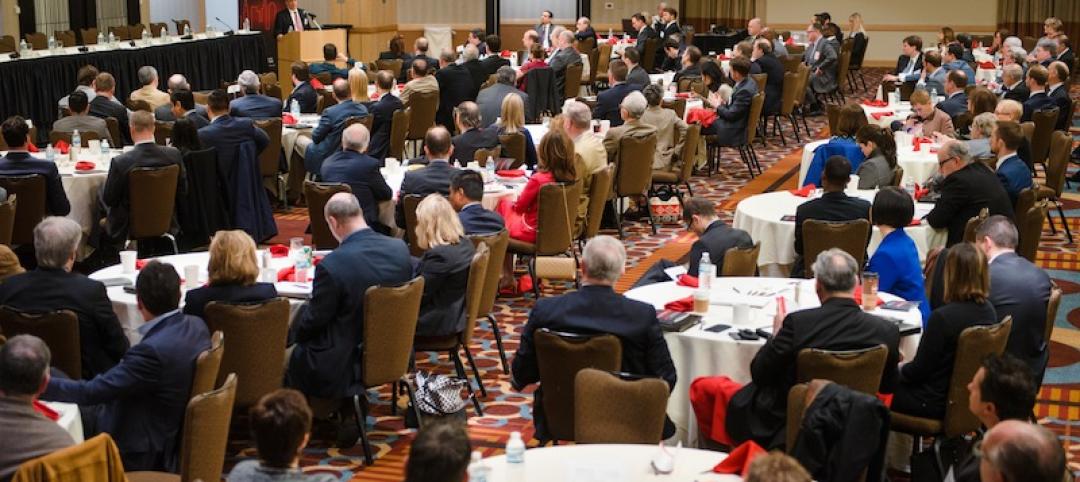It doesn’t look like much from the outside. But as they say, you can’t always judge a book by its cover.
And more interesting design flashes take over inside The Summit, A Dolce Hotel, featuring a 5,743-sf art gallery and an 11,600-sf rooftop terrace and garden space, which leads into a 4,750-sf ballroom that’s one of 19 meeting and banquet areas.
This 426,000-sf, 239-key lifestyle hotel and conference center, which opened adjacent to downtown Cincinnati on April 17, is the first hotel that Dolce Hotel and Resorts by Wyndham designed from scratch. On top of that, it’s an adaptive reuse of a parking garage that itself was once a warehouse-distribution facility.
“I think it is easily the top hotel/conference center combination in southwest Ohio,” says Chris Hopper, Executive Vice President and General Manager for Skanska Ohio, the project’s GC. RBM Development was the developer, Samach + Seo Architecture the design architect, CR Architecture & Design the AOR, and Hirsch Bednar Associates the interior designer.
Transforming a 50-plus-year-old structure into an $80 million hospitality venue, however, was not a foregone conclusion. The warehouse portion, once a NuTone factory, had been built in two stages, 1959 and 1976, and the city had no structural drawings for the 1959 work, which required the hotel’s Building Team to spend more than $100,000 on soil and load tests. Holes had to be drilled into the building’s columns to see how much steel they contained.
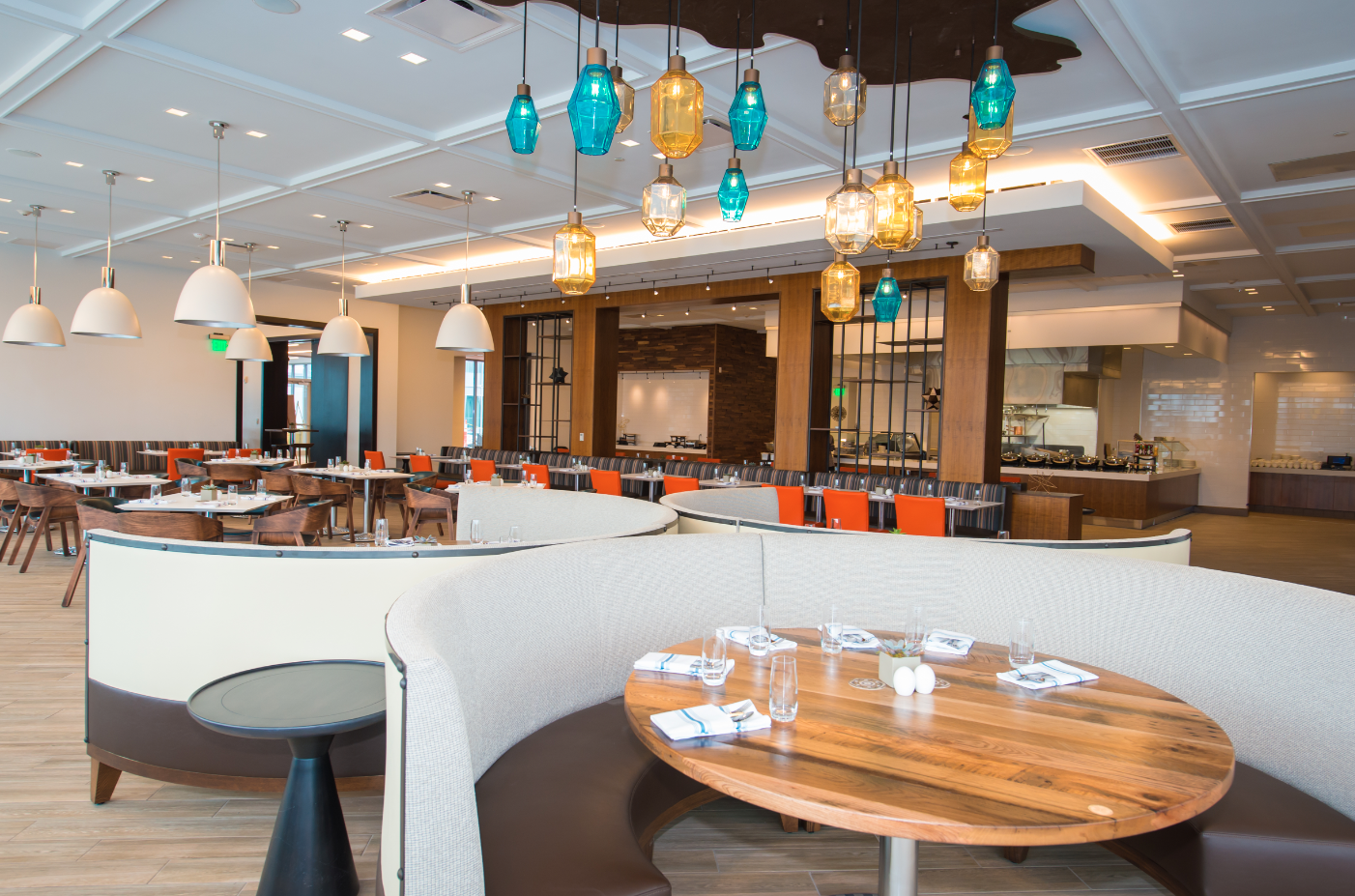 The hotel’s restaurant, bar, and conference and meeting rooms are all located on its roof terrace, which includes 19 meeting spaces with 34,000 sf. Photo: Mike Howard Photography
The hotel’s restaurant, bar, and conference and meeting rooms are all located on its roof terrace, which includes 19 meeting spaces with 34,000 sf. Photo: Mike Howard Photography
Seth Barnhard, Principal and program manager for Sitement, the owner’s rep, says there were “prolonged discussions” about whether just to tear down the parking garage and build new. “It took months of VE [value engineering] to get the cost down to where [reconstruction] made sense.”
On the plus side, the existing building offered an 85,000-sf floorplate. And the parking garage had already been stripped of its cladding to the concrete, so the Building Team pretty much knew what it was working with.
The demolition part of this job took around four months, during which Skanska cut through the structure to create the hotel’s atrium space, which was probably the most important design decision on this project.
The nine-story atrium—a first for a Dolce-branded hotel—was one of three design options that Samach + Seo presented for this project, says Raphael Samach, AIA, Partner with the New York-based firm. The atrium was selected, he explains, because it allowed the structural loads to be redistributed while giving the hotel its greatest height.
Dolce is marketing The Summit as a “lifestyle” hotel, and Barnhard says its design is meant to convey an “ongoing sense of surprise” for guests who enter through a porte cochere that leads into an art-adorned lobby—whose grey palette is flecked with color accents—and portal to the atrium with four glass elevators.
 Photo: Mike Howard Photography
Photo: Mike Howard Photography
The terrace on the roof of the hotel’s 200-slot, two-level parking deck is programmed as a destination and “oasis” for guests and visitors, says Samach. The hotel’s restaurant, bar, conference and meeting rooms are all located on the roof. Servicing the meeting rooms are nourishment “hubs,” which offer a variety of snacks and refreshments during most of the day. (The hotel has two beehives on the roof to make its own honey, and this spring intended to plant its own herb garden.)
However, Skanska still needed to install micro piles in the basement to fortify the existing building that’s supported by an unusual mixture of spread piles and piers, says Jon Budde, Skanska’s project manager.
RMB is an acronym for Red Bank Madison, a development company owned by August Troendle, CEO and Founder of Medpace, a clinical research organization. Next to The Summit, Medpace just started construction on a 250,000-sf headquarters building. The entire complex, which sites on 30 acres, will include 250 multifamily residential units, a walking path, and possibly a Food Hall.
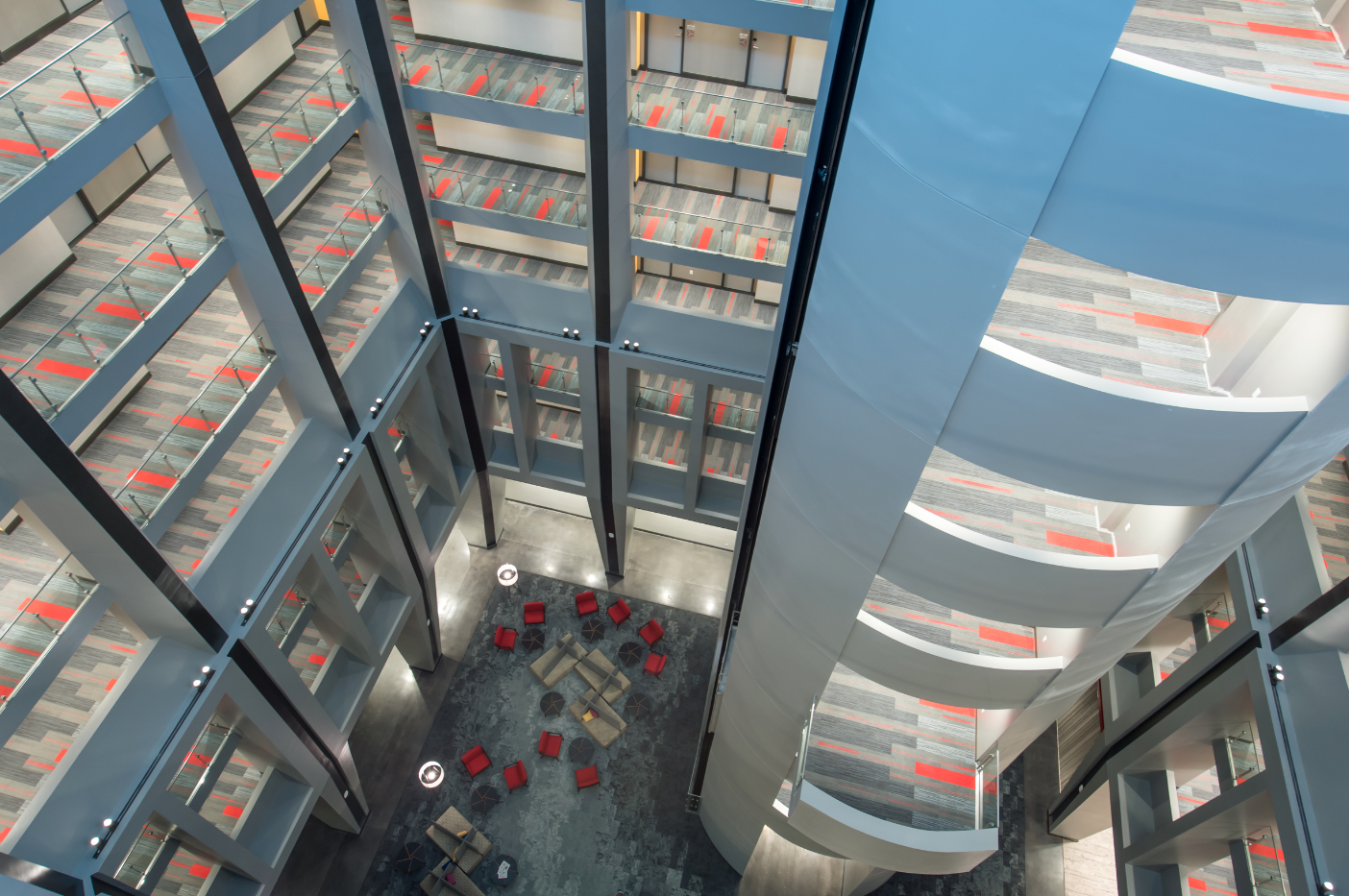 Photo: Mike Howard Photography
Photo: Mike Howard Photography
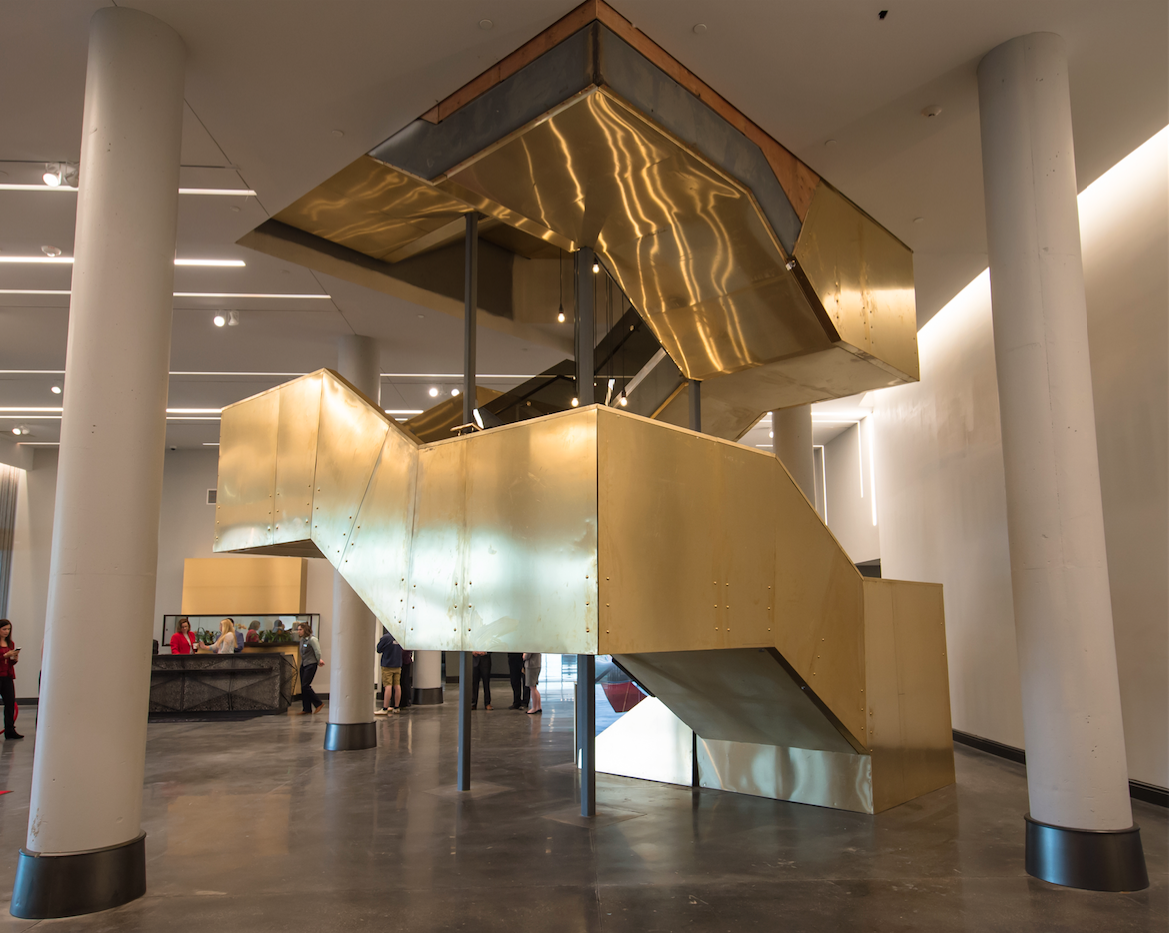 Photo: Mike Howard Photography
Photo: Mike Howard Photography
Related Stories
Adaptive Reuse | Oct 5, 2017
Wexford’s latest innovation center breaks ground in Providence
The campus is expected to include an Aloft hotel.
Office Buildings | Jun 13, 2017
WeWork takes on a construction management app provider
Fieldlens helps turn jobsites into social networks.
Office Buildings | Mar 27, 2017
New York warehouse to become an office mixing industrial and modern aesthetics
The building is located in West Chelsea between the High Line and West Street.
Adaptive Reuse | Nov 9, 2016
Middle school transformed into affordable housing for seniors
The project received $3.8 million in public financing in exchange for constructing units for residents earning less than 60 percent of the area’s median income.
Adaptive Reuse | Nov 7, 2016
From fuel to food: adaptive reuse converts a closed gas station in Princeton, N.J., to a Nomad pizza
The original building dates back to the Modernist 1930s.
Hotel Facilities | Sep 7, 2016
Fish out of water: The site of a Birdseye frozen-food factory in Gloucester, Mass., transforms into a seaside hotel
The construction of this 94-room hotel and conference center pitted tourism proponents against locals who want to preserve this historic city’s fishing heritage.
Healthcare Facilities | Apr 24, 2016
A symposium in New Jersey examines how a consolidating healthcare industry can better manage its excess real estate
As service providers position themselves closer to their communities, they are looking for ways to redirect non-core buildings and land for other purposes.
Adaptive Reuse | Apr 7, 2016
Redevelopment plan announced for Chicago’s historic Cook County Hospital
The century-old, Beaux Arts architecture-inspired hospital will transform into a mixed-use development.


